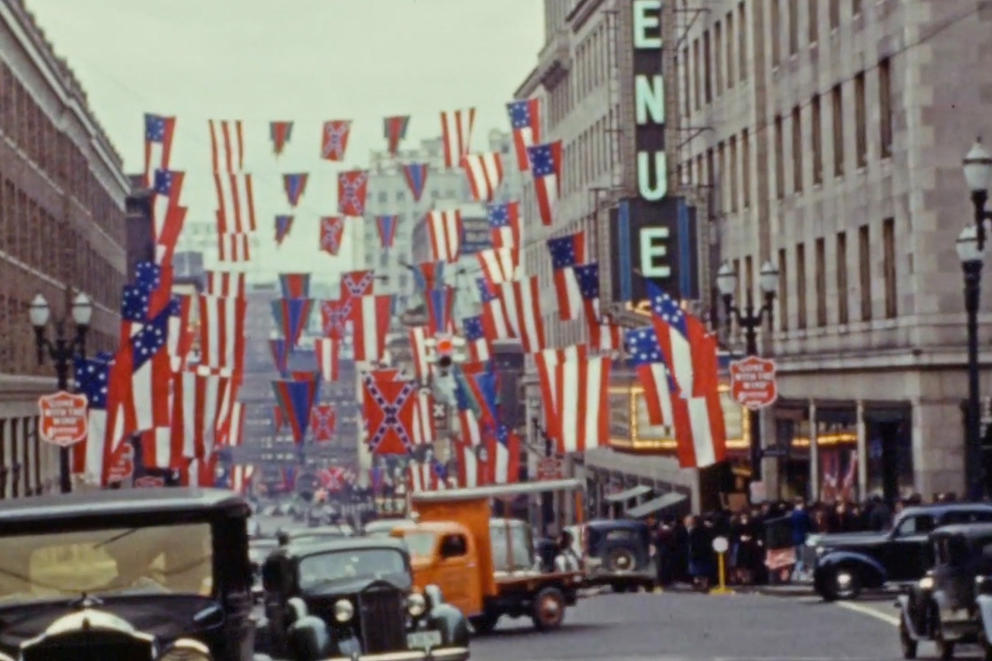In this first “Review,” Hegg and Berger respond to viewers’ questions about a film clip in our 2020 episode on the Seattle Freeze. We showed brief footage of a festive moment for downtown Seattle in the 1940s where red-white-and-blue bunting decorated the street. It turned out that among the American flags were some Confederate flags.
We missed them, but the viewers didn't. “Why did you run a picture of the Confederate flags," they asked, "and what were they doing there?”
“As producer,” says Hegg, “I was looking for archival footage of Seattle in the 1940s – street scenes, people coming and going, traffic – and I found great color footage of a celebration on Fifth Avenue, and within all these flags, there happened to be a glimpse of a Confederate flag.”
“Well, it turned out it wasn't just one Confederate flag,” says Berger. “It was a whole bunch of Confederate flags … there's also the Confederate national flag, which is also red, white and blue and frequently confused with the American flag.”
But why were Confederate flags flying over downtown Seattle? This led to other questions: What was Seattle’s relationship with the Confederacy? How were movies key to changing attitudes toward the South and the narrative of the Civil War?
“We began to track it down,” Berger adds, “and this footage was from the winter of 1940 … Well, it turns out that the Seattle premiere of Gone With the Wind was at The Fifth Avenue Theatre, and Fifth Avenue was festooned with Confederate flags of all kinds.
“There was a mainstreaming of the Southern version of history,” he goes on. “Reconstruction was evil. The Klan in the Northwest flowered in the 1920s, so by the time you get to 1939 with Gone With the Wind, the mood has changed.
“There’s nostalgia for the Old South. … You had active civic groups like the Daughters of the Confederacy putting on balls celebrating Robert E. Lee’s birthday, and [who] promoted things like Confederate statues. Highway 99 was dubbed the Jefferson Davis Highway.”
And what did all this mean for Seattle’s Black population?
“It was devastating,” says Berger. “I mean, you had a community that was relatively tolerant of the Black community at one point in the very beginning of the 20th century, [but then] this steady exclusion, redlining, housing covenants that banned black Americans from neighborhoods. Then you had the white population beginning to really romanticize and embrace this kind of nostalgia for the South, which ignored the enslavement of people. It ignored why the war was fought and who fought it.
“By 1940 when the flags flew, the Confederacy was normalized and romanticized in the white population. I discovered no objection to those banners then … there would be outrage now.”
Read more about Berger's historical investigation of the Confederacy's influence in Seattle here. And for an extended conversation between Berger and Hegg about this episode, listen to the Mossback podcast.
For more on this story, listen to the Mossback podcast:



